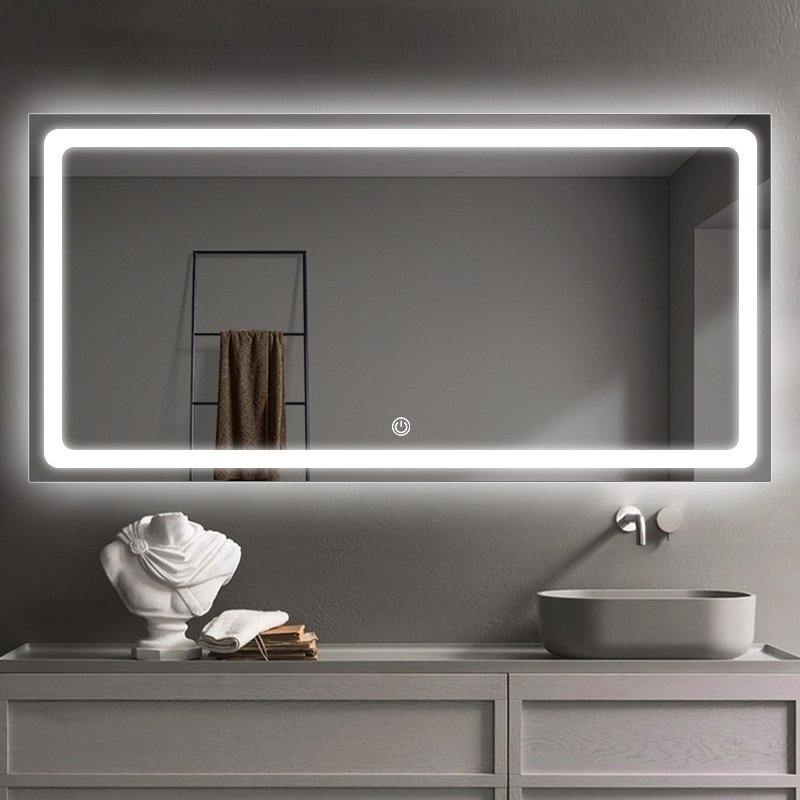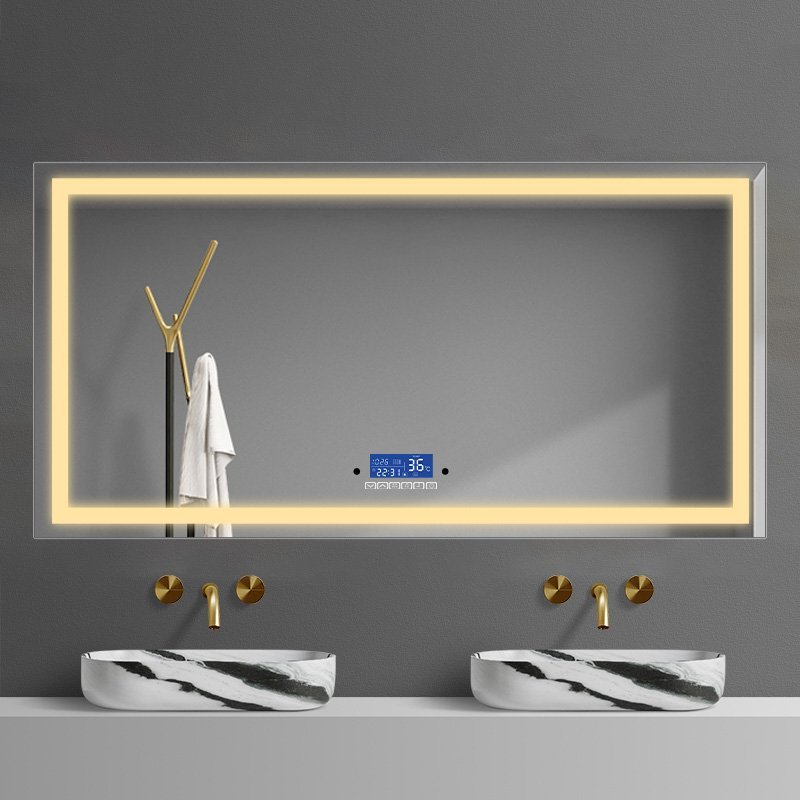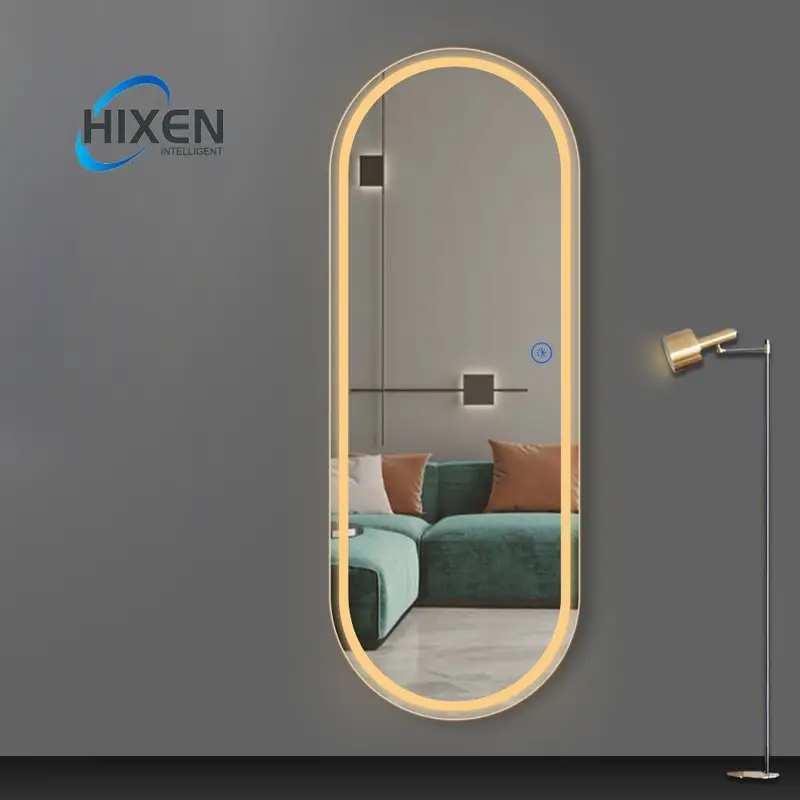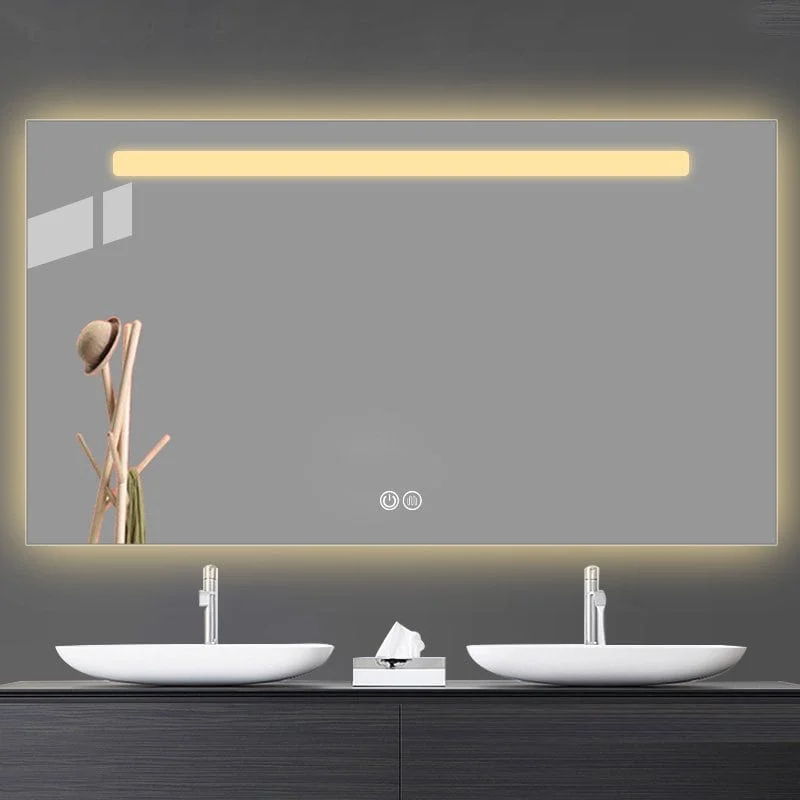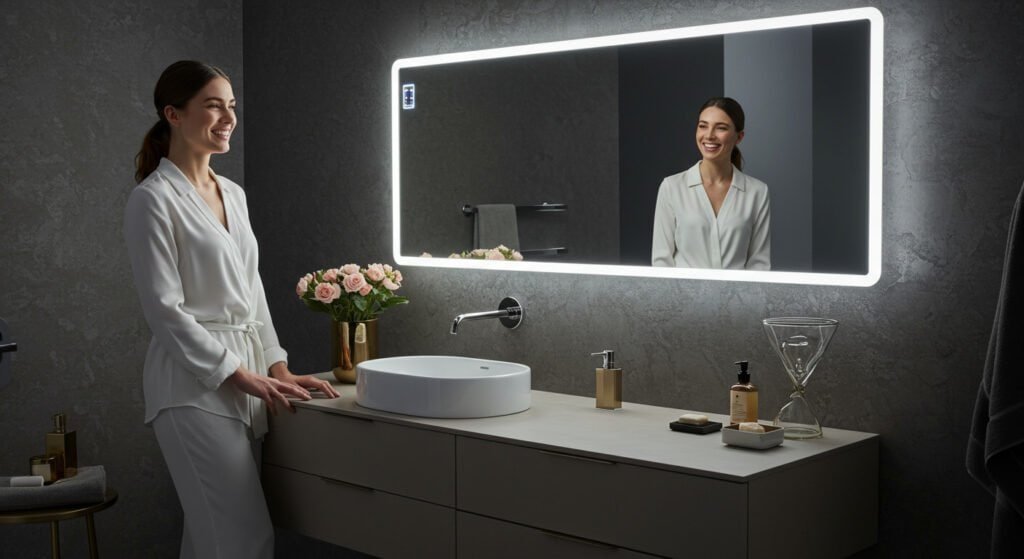|
Obtenir votre Trinity Audio joueur prêt ...
|
Comment fonctionnent les miroirs de salle de bain LED? Un mauvais éclairage de salle de bain crée des ombres et rend les tâches de toilettage quotidiennes frustrantes et inefficaces. Les miroirs de salle de bains traditionnels ne parviennent pas à fournir un éclairage adéquat pour des activités précises comme le rasage ou le maquillage..
Les miroirs de salle de bains à LED fonctionnent grâce à des bandes lumineuses LED intégrées qui se connectent aux circuits électriques, fournissant un éclairage constant autour du périmètre du miroir. The system includes LED drivers for power conversion, touch sensors for control, and advanced features like color temperature adjustment and smart connectivity for enhanced functionality.
Let’s explore the comprehensive technical details that make these modern bathroom accessories essential for contemporary homes.
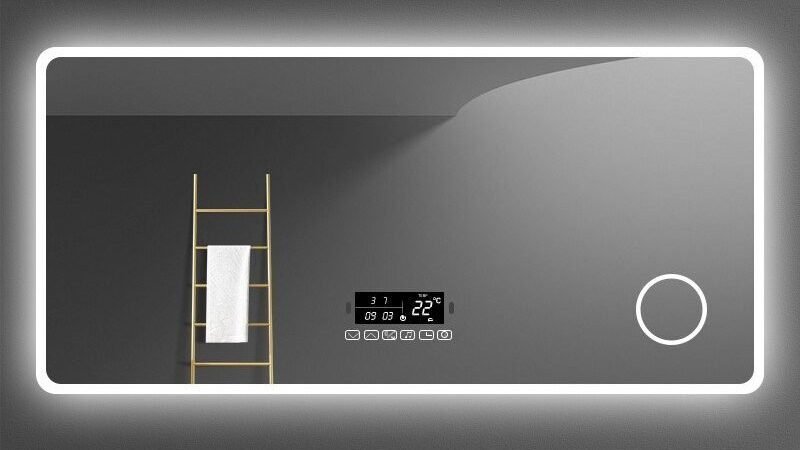
How Do LED Mirrors Get Power?
Understanding both the power requirements and the ultimate power consumption of your mirror can ensure that it is installed as designed and will work properly for an extended period of time.
Most LED bathroom mirrors operate on 12V or 24V DC power systems, requiring built-in transformers to convert standard 110V or 220V AC household electricity. The power consumption typically ranges from 15 à 45 watts, making LED mirrors significantly more energy-efficient than traditional vanity lighting solutions.
The electrical configuration includes LED drivers that regulate current flow to maintain consistent brightness and prevent LED degradation. Modern lighted vanity mirrors for bathroom applications incorporate surge protection and thermal management systems to ensure reliable operation in humid environments.
These low-voltage power requirements substantially reduce the risk of electrical hazards while providing superior-quality illumination for wall mirror with lights installations. High-end bathroom vanity mirrors have intricate power management systems that help save energy and ensure consistent performance over the life of the LEDs.
Do LED Bathroom Mirrors Have to Be Plugged In?
Modern lighted vanity mirrors utilize dedicated electrical systems to convert standard household alternating current into the low-voltage direct current necessary for LED operation. Understanding power requirements helps ensure proper installation and optimal performance of your bathroom mirror with integrated lighting.
Most lighted vanity mirrors can be hardwired directly into your bathroom’s electrical system or connected through standard wall outlets. Hardwired installations provide cleaner aesthetics and permanent power supply, while plug-in options offer greater flexibility for rental properties or temporary installations.
Hardwired installations require connection to your home’s electrical panel through dedicated circuits, typically requiring Protection GFCI for bathroom safety compliance. This method works best for rectangular bathroom mirrors and large bathroom vanity mirrors that serve as permanent fixtures. The electrical connection occurs behind the mirror mounting point, creating seamless integration with your bathroom design.
Plug-in installations use standard electrical outlets with specialized adapters designed for LED mirror applications. These are ideal for smaller mirrors with a black frame design or makeup vanity table with lighted mirror, where you don’t want to make permanent electrical changes. The downside to plugin installations is that you’ll have cords visible and will need to be close to an outlet, potentially ruining the clean design aesthetic that these modern bathroom mirror designs are known for.

Quels sont les inconvénients des miroirs LED?
While LED mirrors offer numerous advantages, understanding potential drawbacks ensures realistic expectations and informed purchasing decisions for your bathroom renovation or upgrade project.
LED bathroom mirrors typically require higher initial investment compared to traditional bathroom mirrors and separate vanity lights. En plus, integrated electronics may complicate repairs if individual components fail, potentially requiring complete unit replacement rather than simple bulb changes.
| Consideration | LED Mirror | Traditional Mirror + Lights |
|---|---|---|
| Initial Cost | $200-$800 | $50-$200 |
| Efficacité énergétique | 15-45W | 60-200W |
| Lifespan | 50,000+ heures | 1,000-8,000 heures |
| Repair Complexity | Haut | Faible |
| Installation Requirements | Electrical knowledge required | Standard mounting |
The integrated design of LED vanity mirrors means that component failures affect the entire unit rather than individual replaceable parts. Alors que LED technology offers exceptional longevity, electronic drivers and control circuits may experience shorter lifespans than the LED components themselves. En plus, some users may find the consistent, shadow-free illumination less flattering than the dramatic lighting effects possible with directional vanity lighting arrangements.
The advanced electronics in today’s lighted vanity mirror design may be more susceptible to power fluctuations and electrical surges, prompting the need for extra surge protection if you live in an area with unstable electricity. En plus, with the added technology of Bluetooth, commandes tactiles, and variable color temperatures, there are more things that could go wrong than with a basic LED light setup.
Are LED Bathroom Mirrors Safe?
Modern lighted vanity mirrors utilize dedicated electrical systems to convert standard household alternating current into the low-voltage direct current necessary for LED operation. Understanding power requirements helps ensure proper installation and optimal performance of your bathroom mirror with integrated lighting.
Modern LED mirrors include IP44 or IP65 ratings for water and dust protection, ensuring safe operation near water sources. The low-voltage DC operation eliminates shock hazards while maintaining brilliant illumination for daily grooming activities.
Comprehensive safety systems in lighted bathroom mirrors include ground fault circuit interrupter compatibility, overcurrent protection, and thermal shutdown mechanisms. The sealed construction prevents moisture infiltration into electrical components, while anti-corrosion treatments protect metal elements from bathroom humidity.
LED bathroom mirrors incorporate multiple safety mechanisms to ensure secure operation in high-moisture bathroom environments. Understanding these protective features helps buyers make informed decisions about bathroom lighting investments and installation requirements.
Certified LED drivers incorporate short-circuit protection, overvoltage protection, and electromagnetic interference shielding to prevent electrical issues. Premium manufacturers have put their LED drivers through the necessary testing to be UL, CE, and other internationally certified for use in wet location electrical appliances.
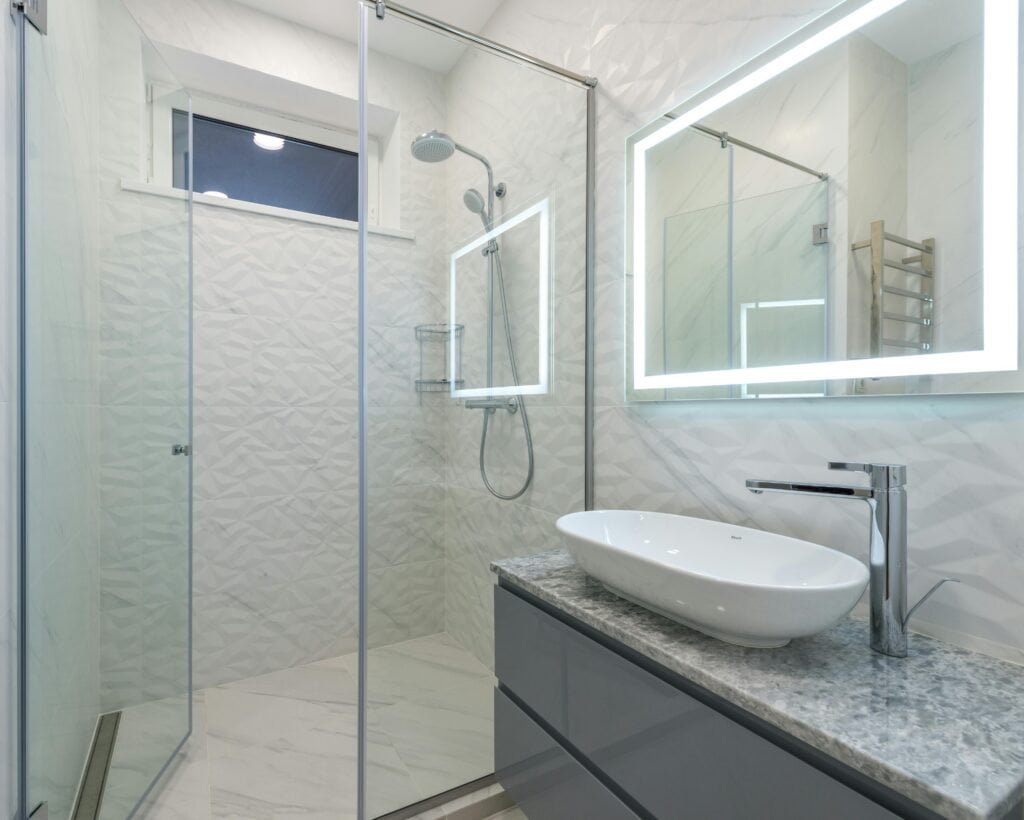
Do You Need an Electrician to Install a LED Bathroom Mirror?
Depending on your bathroom setup, installing an LED mirror could be a complicated process. You need to know when to call in the pros to make sure your LED mirror is installed properly, to code, and will perform the way it was designed.
Hardwired LED bathroom mirrors typically require licensed electrician installation to ensure electrical code compliance and safety standards. DIY installation may be possible for plug-in models with basic electrical knowledge and proper safety precautions.
Professional electrician installation becomes essential when installing large bathroom vanity mirrors that require dedicated circuits, Protection GFCI, or modifications to existing electrical infrastructure. Licensed professionals ensure proper wire sizing, circuit protection, and grounding requirements for bathroom electrical installations.
They ensure compliance with local building codes and electrical regulations as it relates to lighting in a bathroom. You need more than just a person to run some wires. You need a person who can do load calculations, analyze a circuit, and tie everything into the safety systems. An electrician will test all the safety systems that are present, verify everything is properly grounded, and present you with the proper documentation on the electrical work done for both insurance purposes and warranty activation.
Electricians can also tell you the best spot to install it to get the most light distribution, and where to put the switch so you can easily turn it on and off. If you have a smaller plug-in model, or one that’s battery powered, you can probably do it yourself if you’re comfortable with basic electrical work and secure mounting.
Are LED Mirrors Good for Bathroom?
LED mirrors meet and exceed those requirements. This is why LED mirrors are so popular in bathroom design today—they have features you need and want in an environment where an ordinary mirror would fall short.
Bathroom-specific LED mirrors include anti-fog heating elements, moisture-resistant construction, and optimized light color temperatures for accurate color rendering during grooming activities. The integrated approach eliminates shadows and provides superior task lighting compared to overhead bathroom fixtures alone.
The anti-fog feature in a high-quality lighted bathroom mirror uses thin heating elements located behind the mirror to safely and steadily maintain fog-free viewing. Non seulement ça, this system operates independently of the LED light system. This way, if you want to see yourself in the mirror before you turn your makeup light on or your LED light on when you wake up in the morning, you can do that and still have a clear picture.
The anti-fog features typically use very little additional energy, généralement 20 à 40 watts, but they add a lot of value to your daily use of the product. LEDs also provide better moisture resistance in lighted mirrors in a bathroom as compared to traditional incandescent or fluorescent lighting in a bathroom. This is due to the design and the fact that LEDs are solid state, so you don’t have glass filaments or gas-filled tubes that are more prone to failure in a moist environment.
The backlit mirrors now use special sealing techniques and corrosionresistant materials for the bathroom. These mirrors also have the proper color rendering, which is extremely important. Otherwise, you could end up with a pink face and white neck when applying your makeup.
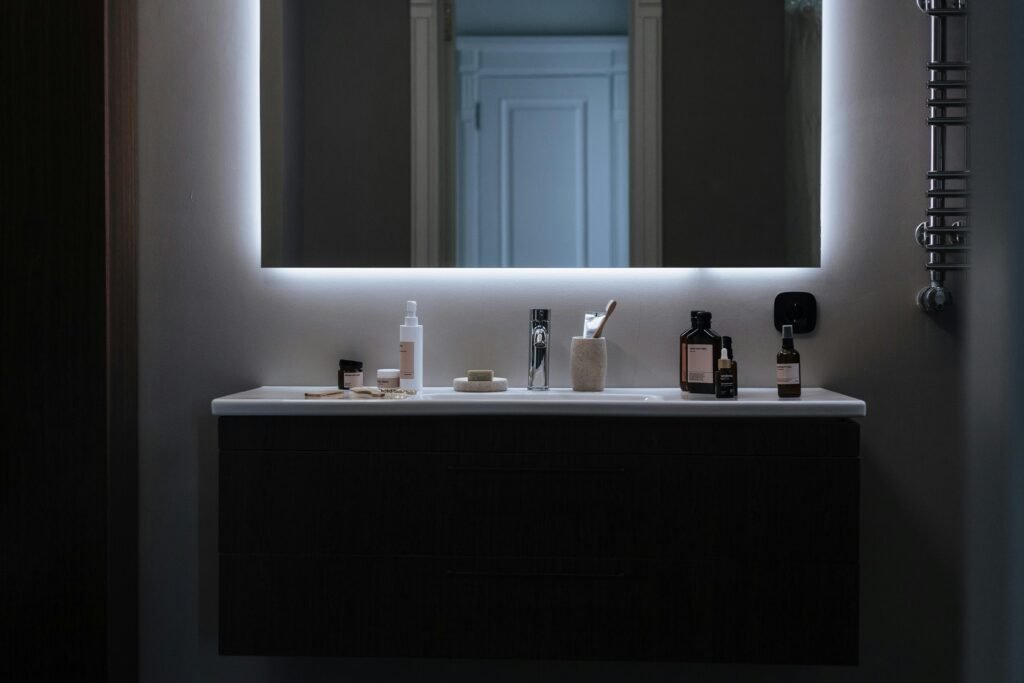
How Long Do LED Bathroom Mirrors Last?
Understanding the operational lifespan and performance characteristics of LED bathroom mirrors helps buyers evaluate long-term value and maintenance requirements for their bathroom lighting investment.
Quality LED bathroom mirrors typically provide 50,000 à 100,000 heures de fonctionnement, équivalent à 25-50 années d'utilisation des ménages normaux. LED degradation occurs gradually, with light output slowly decreasing over time rather than sudden failure like traditional bulbs.
| Mirror Size | Expected LED Lifespan | Electronic Component Life | Warranty Coverage |
|---|---|---|---|
| Petit miroir de salle de bain | 50,000-70,000 heures | 10-15 années | 3-5 années |
| Medium lighted vanity mirrors | 60,000-80,000 heures | 12-18 années | 5-7 années |
| Large light up vanity mirror | 70,000-100,000 heures | 15-20 années | 7-10 années |
LED technology offers exceptional longevity advantages over conventional lighting solutions, but actual lifespan depends on several factors including ambient temperature, electrical quality, and usage patterns. Premium LED mirrors incorporate thermal management systems to maintain optimal operating temperatures and extend component life. The solid-state construction eliminates mechanical wear points common in traditional lighting, contributing to extended operational life.
Electronic components including LED drivers, control circuits, and sensors may have shorter lifespans than the LED elements themselves, Typiquement allant de 10-20 years depending on quality and environmental conditions. Quality manufacturers provide warranty coverage for electronic components separate from LED elements, ensuring reasonable protection for the significant initial investment in modern bathroom lighting technology.
Which Is Better LED Mirror or Normal Mirror?
In comparison, lighted mirrors and LED mirrors offer similar functionality. Once you understand that, you can make an informed decision about which product makes the most sense for your specific needs.
LED mirrors provide superior energy efficiency, longévité, and integrated functionality compared to traditional bathroom mirrors paired with separate vanity lights. Cependant, traditional solutions offer lower initial costs and simpler maintenance requirements for budget-conscious consumers.
Traditional bathroom lighting arrangements typically combine standard glass mirror with separate light fixtures, offering flexibility in component replacement and upgrade options. This approach allows independent selection of mirror quality, lighting type, and fixture style to match specific preferences and budgets. Maintenance involves standard bulb replacement and conventional electrical repairs that most homeowners can manage independently.
LED mirror integration eliminates the need for separate vanity lights while providing superior light distribution and modern features unavailable in traditional arrangements. The unified design creates cleaner aesthetics and optimized performance specifically designed for bathroom applications. Energy consumption reductions of 60-80% compared to traditional incandescent bathroom vanity lights provide ongoing operational savings that help offset higher initial costs.
The functionality advantages of LED mirrors include features like touch controls, ajustement de la température de couleur, anti-fog heating, and smart connectivity that cannot be easily replicated with traditional lighting arrangements. These advanced capabilities enhance user experience and provide convenience benefits that justify premium pricing for many consumers seeking modern bathroom mirror solutions with integrated room mirror ideas functionality.

Conclusion
LED bathroom mirrors represent sophisticated lighting technology that transforms daily grooming experiences through integrated illumination, caractéristiques intelligentes, et un fonctionnement économe en énergie. The combination of advanced LED technology, safety features, and bathroom-specific functionality makes these mirrors valuable additions to modern bathroom designs that prioritize both performance and aesthetics.
- Pour apprendre à choisir le bon miroir de salle de bain, cliquez ici.
- Pour apprendre à installer un miroir, choisissez ici.
- Pour apprendre à choisir le miroir de bonne taille, cliquez ici.
- Pour apprendre comment les miroirs sont fabriqués ici.
- Cliquez ici et vous apprendrez pourquoi nous avons l'air mieux dans les miroirs.
- Cliquez ici, vous découvrirez le haut 10 fabricants de miroir LED pour 2024.
- Cliquez ici pour découvrir pourquoi ma lumière miroir de vanité ne s'allume pas?
- Découvrez quelle est la taille du miroir de salle de bain? Cliquez ici
- Cliquez ici si vous ne savez pas comment nettoyer votre miroir
- Pour savoir comment réparer le miroir du capteur tactile ne fonctionne pas, cliquez ici
- Découvrir 10 Problèmes de miroir de salle de bain LED commun Cliquez ici






